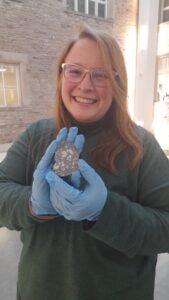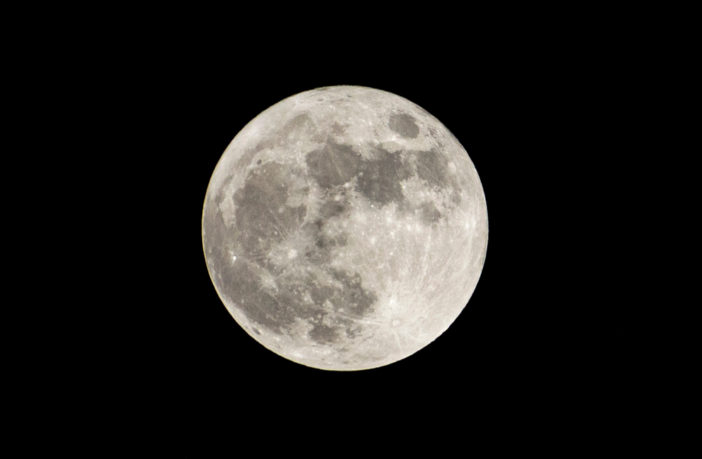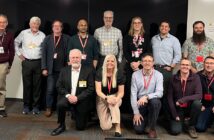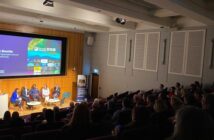Dr Tara Hayden of The Open University (OU) has published research identifying, for the first time, the mineral apatite in a sample of early lunar crust, allowing for new insights into the water composition of the Moon.
The research, published today in Nature Astronomy, offers exciting new evidence that the Moon’s early crust contained more water than was originally thought, opening new doors into the study of lunar history.
The Apollo samples were first assumed to be ‘volatile-poor’ upon their return from the Moon, leading to the wide-known description of the Moon as ‘bone dry’. In 2008, Alberto Saal and other researchers discovered the presence of significant amounts of water and other volatiles in glass beads from the Apollo sample collection. This set forth fifteen years where re-analysis of the Apollo samples and newly found lunar meteorites have revealed that the Moon has an abundance of water across its surface.
This work was focused a lot on the mineral apatite, which contains volatile elements in its mineral structure. Apatite was found in all lunar rock types except glass beads and Ferroan Anorthosites, the latter representing the Moon’s early

Dr Tara Hayden
crust. The Ferroan Anorthosite group is known to be incredibly old (4.5-4.3 billion years old) and is the only rock type known to have formed directly from the Lunar Magma Ocean – when the Moon was almost entirely molten.
The discovery of apatite in this rock type has allowed for the direct examination of the volatile contents and isotopic composition of this unknown stage in lunar evolution for the first time.
Dr Tara Hayden said:
“The discovery of apatite in ferroan anorthosite for the first time is incredibly exciting – as we can finally start to piece together this unknown stage of lunar history. We find that the Moon’s early crust is richer in water than we expected, and its volatile stable isotopes reveal an even more complex history than we knew before.
“Lunar meteorites are revealing new, exciting parts of the Moon’s evolution and expanding our knowledge beyond Apollo. As the new stage of lunar exploration begins, I am eager to see what we will learn from the lunar farside.”
Mahesh Anand, Professor of Planetary Science and Exploration, who was on the team of OU academics working on the research, said:
“Unravelling the history of water in the earliest-formed lunar crust ~4.5 billion years ago is important for improving our understanding of the origin of water in the Solar System. Ancient rock samples from the Moon in the form of lunar meteorites provide an excellent opportunity for undertaking such investigations.”
Team of academics from The Open University:
- Tara Hayden (Former PhD Student and current Visiting Fellow) – this paper is on work carried out during my PhD on a project title ‘Assessing the volatile inventory and history of the Moon using lunar meteorites’. I am currently a Postdoctoral Associate at The University of Western Ontario, Canada, focusing on lunar geoscience.
- Mahesh Anand (Professor of Planetary Sciences and lead supervisor of Tara Hayden’s PhD project)
- Ian Franchi (Professor of Planetary Sciences and co-supervisor of Tara Hayden’s PhD project)
- Xuchao Zhao (Project Officer, NanoSIMS operator)
Team of academics from other institutions:
- Thomas Barrett (Postodctoral Fellow: Lunar and Planetary Institute, Houston, Texas, USA – who is also a former academic of The OU)
- Martin Whitehouse (Swedish Museum of Natural History, Stockholm, Sweden)
- Heejin Jeon (Swedish Museum of Natural History, Stockholm, Sweden)
You can read the paper in full on Nature Astronomy.



